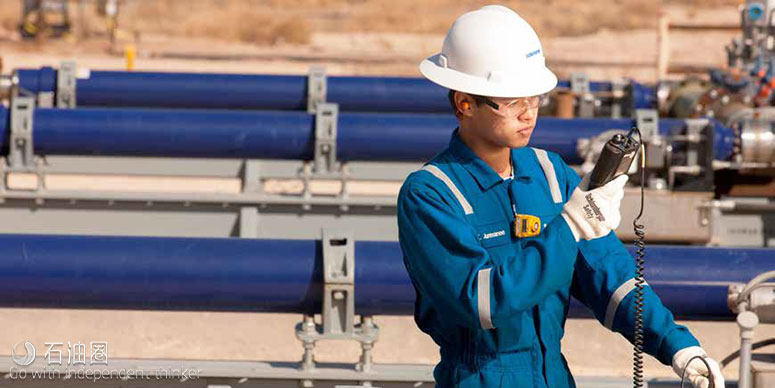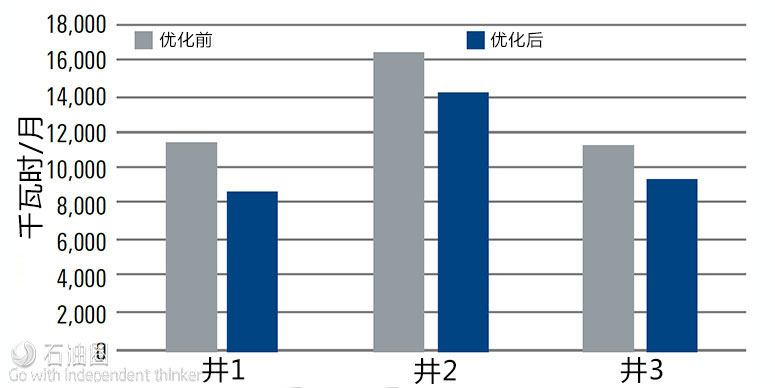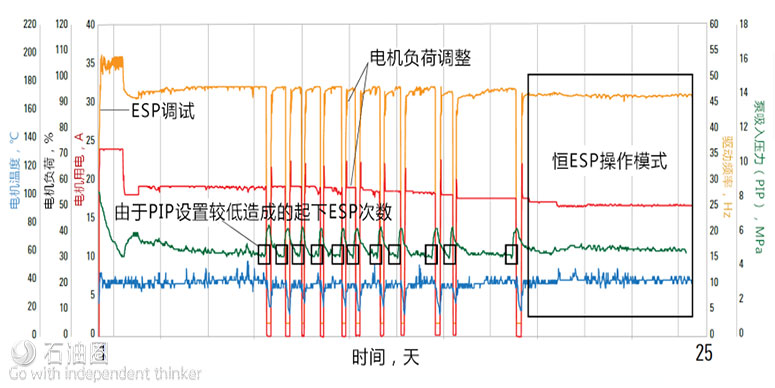Monitoring and surveillance is proven to minimize downtime, maximize production, and reduce total operating cost. High-value offshore wells have historically been monitored; however, large brownfields are now being connected to further optimize production and enable remote operations.
The Lift IQ* production life cycle management service is the premiere monitoring and surveillance platform for artificial lift systems. It provides real-time analytics and optimization with four convenient levels of coverage. From operations in a single well to an entire field, the Lift IQ service taps into the renowned engineering, manufacturing, and surveillance expertise of Schlumberger with access to service centers 24 hours a day and convenient locations across the globe.
Schlumberger is redefining artificial lift excellence with the Lift IQ production life cycle management service.
1.Reduce total cost of ownership;
2.Mitigate risk of deferred production and workover costs;
3.Minimize downtime and achieve higher operational reliability;
4.Increase production through optimization and enhancement techniques;
5.Eliminate risk of early failure;
6.Extend ESP run life;
7.Optimize power consumption;
8.Obtain valuable well and reservoir diagnostics.
Advantages
1.Increase production;
2.Increase recovery factor;
3.Increase production;
4.Reduce cost per barrel produced;
5.Reduce opex and capex;
6.Reduce well interventions;
7.Minimize downtime and deferred production;
8.Extend asset run life;
9.Optimize lift system efficiency and workover planning;
10.Increase production;
11.Reduce HSE risk exposure and field trips;
12.Real-time lift status;
13.Lift system protection.
Performance Indicators
1.Incremental production;
2.Production decline;
3.Incremental production;
4.Well intervention candidate count;
5.Run life, survivability, and MTBF;
6.Deferred production;
7.Power consumption per barrel;
8.Field trips and miles driven;
9.ESP failure rate;
10.Uptime and downtime;
11.Shutdown count;
12.Tracking well count.
24/7 Surveillance and Support
Dedicated artificial lift surveillance engineers are based at one of many Schlumberger Artificial Lift Surveillance Centers (ALSCs), where they monitor alarms 24/7, 365 days of the year. Our engineers track ESP trips and alarms, from initial identification and diagnosis of the root cause to quick recommendations of remedial action.
The Schlumberger ALSC monitors hundreds of data signatures—conditions that cause alarms to be sent. One-third of these alarms are considered critical to preventing ESP downtime, misuse, or failure. Prevention of tripping prevents stress on equipment, thereby minimizing failures of pumps and controllers, prolonging their life, and reducing workover costs and the costs of deferred production.
Experience matters
1.90 years of experience and technology leadership;
2.32 countries and 187 oil companies using Lift IQ service;3.Distinction in research and engineering; manufacturing; operations; application engineering; dismantle inspection failure analysis; and quality, health, safety, and environment (QHSE) reporting;
4.Multidisciplinary collaboration and support across Schlumberger;
5.Access to InTouchSupport.com* online support and knowledge management system and QHSE reporting systems, best practices, case studies, and knowledge base repository.
Wellsite Data Infrastructure
1.Instruct* control unit: All-in-one single interface design;
2.SCB3 Site communication box: Remote commissioning and two-way communication;
3.Wellsite: Transmission of critical well data through premium security networks to global server;
4.Satellite: Connectivity modes including satellite, cellular, and direct SCADA system connection
Lift IQ Service Connectivity
Data transmission, storage, and processing are securely managed through the Schlumberger network to deliver effective solutions quickly and using the right data, tools, and expertise.
1.Global server:Worldwide, in-country, and on-premise solution;
2.Artificial Lift Surveillance Centers:Dedicated engineers available 24/7 for real-time troubleshooting and analysis.
Data Collection and Transmission
The Instruct all-in-one acquisition and control unit and the SCB3 site communication box are two critical components required to transmit data using the Lift IQ service. With easy-to-use interfaces, the units securely store data and connect the wellsite with 24/7 real-time support and surveillance.
Instruct All-In-One Acquisition and Control Unit
Employing a highly modular design, the Instruct unit facilitates variable configurations and enhances serviceability. The unit is designed for the Schlumberger SpeedStar* variable speed drive, SpeedStar MVD* mediumvoltage variable speed drive, low-voltage variable speed drive, stand-alone downhole monitoring, and SCADA systems. It supports advanced functions such as smart gas lock control and rocking start as well as provides remote access and multilanguage support.
SCB3 Site Communication Box
The SCB3 site communication box provides remote commissioning and two-way communication via the Artificial Lift Surveillance Centers. It uses local storage to prevent data loss during network outages as well as alarm notifications and exemption reports. The SCB3 site communication box uses satellite and cellular connectivity and supports any Modbus? device. It has two serial ports and a menu-based interface for easy installation.
Integrated Proprietary Platform
Lift IQ service provides access to all critical wellsite data in one software solution. No more singular programs that lack synchronized integration. Lift IQ service seamlessly merges data into one platform for quick and easy management of all monitoring and troubleshooting requirements.
1.One platform with a solutions-based approach;
2.Monitoring and surveillance;
3.Well and field performance indicators;
4.For alarms and events management;
5.Online ESP diagnostics and optimization.
DesignPro ESP Design Software
Receive real-time ESP diagnostics and optimization using high-frequency data through Schlumberger proprietary DesignPro* ESP design software. The DesignPro software provides insight into ESP performance and enables engineers to optimize production in the most efficient manner.
Virtual Flow Metering
PCL* production composite log is a real-time high-frequency production flow rate and water-cut estimation service. This service has a useful addition of a lift health check, which provides power optimization, enhanced inflow, and decline curve modeling as well as pressure and rate transient analysis.
Case Study1
With the current economic climate, the Schlumberger ASLC encouraged Compa?ía Espa?ola de Petróleos (Cepsa) to evaluate system operations to increase efficiency. The installed ESPs were designed based on predicted reservoir and production conditions. However, at the current stage of production, the ESPs were encountering 90% water cut with motor load of less than 45%, which made them inefficient and expensive to run.
Technologies
1.Lift IQ production life cycle management service;
2.DesignPro ESP design software;
3.PIPESIM* steady-state multiphase flow simulator.
Using Lift IQ service, Schlumberger monitored the ESP operational data for the Caracara Sur field, evaluated the statistical information, and also reviewed production trends, surface and downhole variables, well intervention history, failure cause, and total electric cost and consumption.
Based on this evaluation, Schlumberger used DesignPro software and PIPESIM simulator to optimize electric cost for the ESPs, reducing electric costs by 16% per month across three wells—an approximate savings of USD 79,000 per year. Once introduced to the remaining wells, total savings are expected to reach USD 480,000. This optimization enabled Cepsa to reinvest these expenses in other operational areas and improve overall electrical stability and infrastructure.
Case Study2
An operator in Russia needed to optimize production by transitioning from gas lift to an ESP in several wells. However, once the ESPs were installed, their operation was compromised due to high GOR, periods of natural flow, limited drawdown pressure, and a Christmas tree configuration that is rarely used with ESPs. As a result, the operator encountered frequent ESP stops, short operating cycles, excessive motor heating, and increased downtime and production deferment.
Technologies
1.Lift IQ production life cycle management service;
2.DesignRite* artificial lift design and optimization software;
3.PIPESIM* steady-state multiphase flow simulator;
4.Avocet* production operations software platform.
Schlumberger deployed Lift IQ service to provide real-time control and acquire data, which was analyzed using DesignPro software, PIPESIM simulator, and Avocet platform. Based on this analysis, the team made ESP trip and set point adjustments, improved cyclic-mode periods, and implemented motor amps and load-feedback modes to address the issues encountered. As a result, the operator was able to eliminate ESP stops and enhance ESP longevity, reduce downtime by 27%, and improve overall lift efficiency. Additional reports provided by Schlumberger surveillance engineers continue to help the operator evaluate ESP performance and develop production optimization strategies.

 石油圈
石油圈


-wz.jpg)

